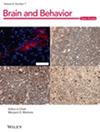The Combined Effect of Visual Stimulus Complexity and Semantic Content on Audiovisual Associative Equivalence Learning
Abstract
Background
The Rutgers Acquired Equivalence Test (RAET) is an associative learning task that requires participants to learn pairs of visual stimuli and then recall and generalize these associations. To further explore this cognitive task, we developed three audiovisual learning tests with the same structure as the original RAET.
Methods
Each audiovisual test applied the same four distinct auditory antecedents but differed in visual consequents in complexity and semantic content, that is, cartoon faces (SoundFace), colored fish (SoundFish), and geometric shapes (SoundPolygon), respectively. The present study investigated the effect of these different visual stimuli on performance in audiovisual associative equivalence learning. Learning performance was assessed across three phases: acquisition, retrieval, and generalization. A total of 52 participants (25 females, 27 males, mean age = 25.88 ± 10.28 years) completed the tasks. Statistical analyses, including Friedman's ANOVA and Wilcoxon matched-pairs tests with Bonferroni correction, were applied to evaluate differences in performance across the tests.
Results
Participants consistently performed significantly (p < 0.01) better and responded faster in learning, retrieval, and generalization phases of the SoundFace test compared to the SoundFish and SoundPolygon tests, which did not significantly differ from each other. Additionally, a semantic association task confirmed that face and fish stimuli were significantly (p < 0.01) richer in semantic content than polygons, yet only face stimuli significantly facilitated audiovisual learning outcomes.
Conclusion
These results suggest that the semantic content of visual stimuli—which could influence their verbalizability—is not sufficient on its own to enhance performance in audiovisual associative learning. Additionally, the number and variety of different features in visual stimulus sets (such as faces, fish, or polygons) may also significantly influence performance in audiovisual equivalence learning.


 求助内容:
求助内容: 应助结果提醒方式:
应助结果提醒方式:


